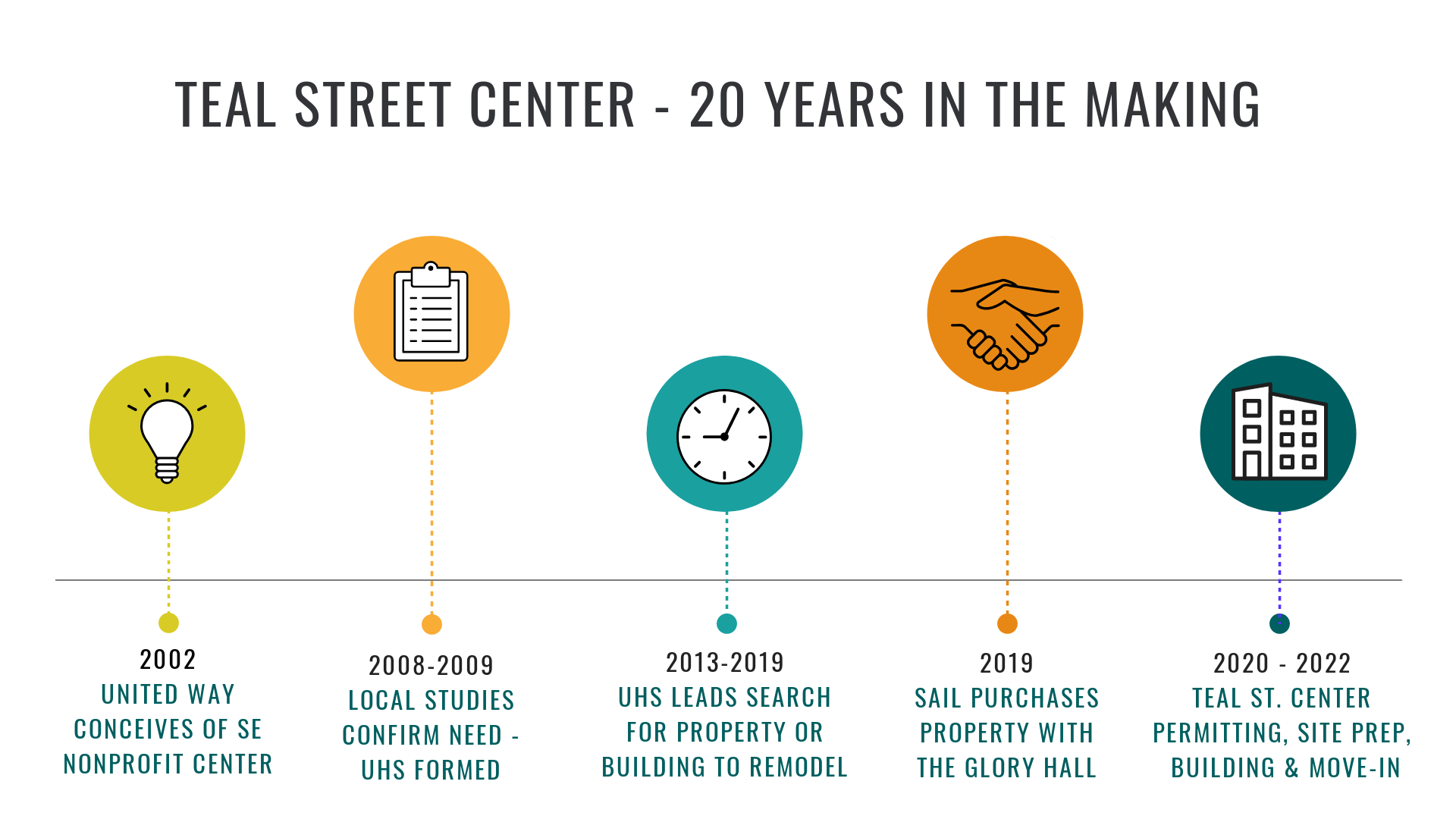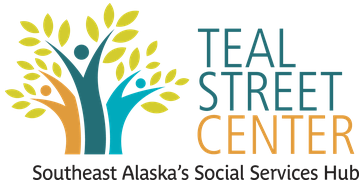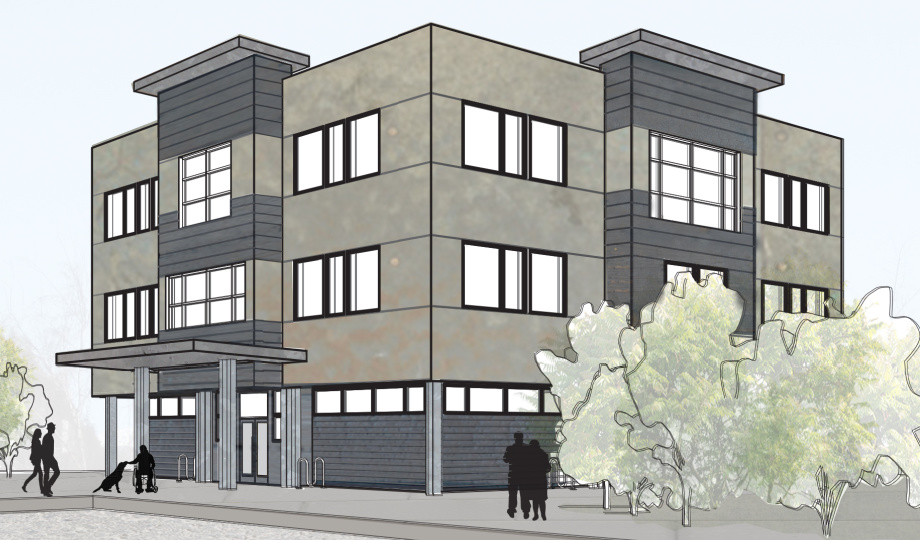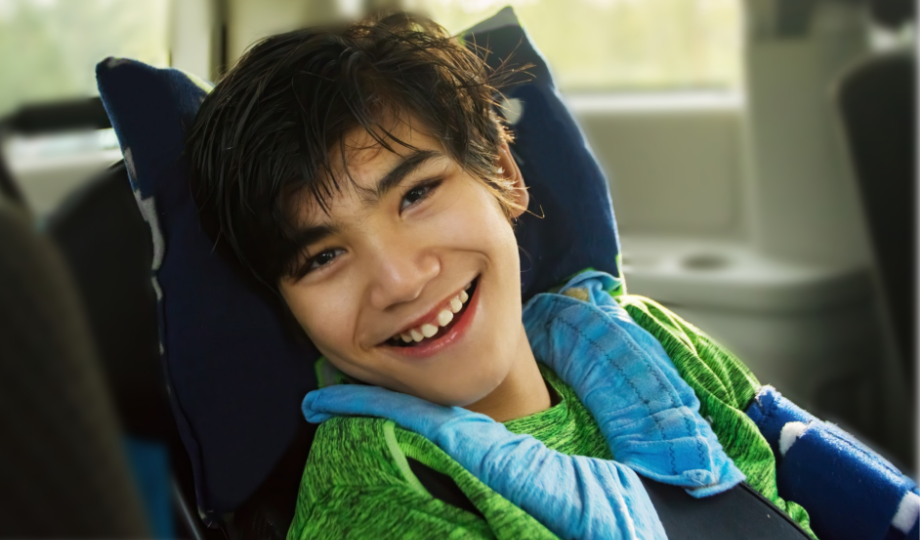
A Juneau nonprofit center (Center), filled with dynamic social service agencies maximizing efficiencies, was first conceived in 2002 thanks to the foresight of United Way of Southeast Alaska. Although the players and location of the Center have altered somewhat over the ensuing years, the vision has remained constant:
By co-locating offices, sharing resources and reducing office costs, the Center will allow the tenant organizations to more efficiently serve their constituencies. The Center also will foster collaboration amongst participating organizations.
In 2008, Southeast Alaska Independent Living, Inc. (SAIL) and the United Way restarted the project. The Pre-Development (Pre-D) program, funded by the Rasmuson Foundation, the Alaska Mental Health Trust Authority and the Denali Commission embraced the project. Pre-D commissioned the McDowell Group to conduct a needs assessment. The July 2008 report documented overwhelming desire/need for just such a project.
Pre-D funded the development of Articles of Incorporation, Bylaws, filing for 50(c)(3) status, and the vetting of several potential properties for possible development. In May 2010 the United Human Services of SE Alaska received notification from the Internal Revenue Service recognizing 501(c)(3) status with an effective date of December 8, 2009.
On behalf of the initiative, the McDowell Group was hired to conduct a demand study in 2010 and a follow up report published in January 2017. UHS has also worked in close concert with the Nonprofit Center Network (NCN), a consulting and technical assistance organization assisting hundreds of nonprofit centers in the US and Canada. Consultants from the NCN traveled to Juneau to conduct interviews, a community forum, and to provide technical support.
According to the McDowell study, potential benefits of locating in a multi tenant nonprofit center include:
- Increased financial stability of tenant organizations through affordable rents, space security and consistency in location; low-cost access to resources such as conference/meeting rooms, training facilities, communications infrastructure and information resources; and reduced costs due to sharing services, bulk supplies and office equipment.
- Greater visibility in the community for the nonprofits, including increased government and funder awareness; more coverage by media; and incubation of, and support to, small unincorporated community organizations that provide needed services or especially innovative programs.
- Socioeconomic development of neighborhoods and communities through economic impact of workers; attracting other community development and investment; improved security and safety of former underutilized areas; and development of building(s) that are environmentally appropriate (“green buildings”) and provide universal access (ADA accessibility standards).
- Increased operating efficiency through cross-organizational collaboration; higher worker recruitment and retention due to a more supportive and pleasant work environment; enhanced professionalism; reduced duplication of services; low-cost, more convenient access to management and consulting support; informal coaching, mentoring and problem solving; and formal staff development and mutual learning opportunities.
- Changes in the way the nonprofit sector operates; also known as “strategic systems change,” this includes shifts in the way agencies and stakeholder groups interact with each other and the community; inclusion of stakeholders; development of leadership and leadership alliances at all levels; constituent partnerships, values identification and clarification, equalization of knowledge, and sustainability.
To prove the model, in 2013 UHS took the master lease for 6 co-locating nonprofits on Hospital Drive. The nonprofits share a meeting room and custodial services. Unfortunately the facility itself has many critical shortcomings and does not allow the tenants and patrons of services to fully realize the benefits of co-location.
In 2019, the opportunity to purchase property from St. Vincent de Paul in cooperation with The Glory Hall (TGH) presented itself. TGH and SAIL purchased the property, with the intention of eventually subdividing it into two parcels. With that, a vibrant reiteration, in partnership with The Glory Hall and adjacent to St. Vincent de Paul, was conceived – Teal Street Center.
Get the Facts About Teal Street Center
Click to access the Teal Street Center Fact Sheet, with all the details about Southeast Alaska's Social Services Hub in one convenient location. Easy to print or forward to your friends...
Ways to Donate
Learn more about ways to donate to the Teal Street Center campaign, donation levels and acknowledgement benefits. Every gift brings us one step closer to realizing the dream of a social services hub in Juneau...
Meet Our Tenants!
Teal Street Center's tenants are at the heart of our mission. Learn more about their important work to serve seniors, people with disabilities, low-income households, and many more in the community...



